Overview
For continuous growth, S-OIL put effort into increasing the value of manufactured products. As a result, by commercially operating the BTX production facility and Naphtha Reforming Plant in April 1991, a base for business diversification in the petro-chemistry area was provided.
Also, for the single process within existing factory land in December 1997, the Xylene Center that produces Para-Xylene of 700,000 tons (currently 740,000 tons) was completed and the company officially entered the petro-chemistry area. In particular, this factory did not only reduce the investment burden per unit, but the petro-chemical products from the BTX process were Para-Xylene, which has high competitiveness from the perspective of material fees. In this way, the Residue Fluidized Catalytic Cracker (RFCC) started to produce 200,000 tons of propylene in April 1997 and expanded the business area of petroleum. This was an opportunity to provide the foundation to acquire competition superiority in the petro-chemistry downstream sector.
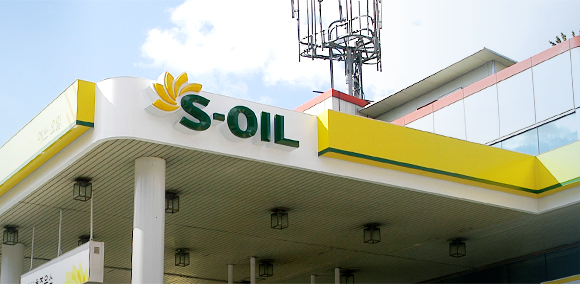
S-OIL reformed its crude oil refining process and built its 2nd Xylene center that produces Para-Xylene, which is the base material of compound fiber, in April 2011. Subsequently, the 2nd Aromatic Complex composed of the aromatic facility that produces BTX was completed.
Through the operation of this facility, S-OIL possessed the best competiveness in the petro-chemistry area, following the lubricant area and oil refining area, while simultaneously possessing a 600,000 ton Benzene production facility and 1.85 million ton Para-Xylene production facility.
S-Oil successfully completed RUC/ODC Project, which is the largest project of the company, in 2018. And it widened Petrochemical business area to olefin downstream. In addition, S-Oil will continue active investment for high value-added products. Through this, S-Oil will be closer to achieve a vision as 'The most competitive and admired energy & chemical company in Asia Pacific'.
Facility
BTX Plant
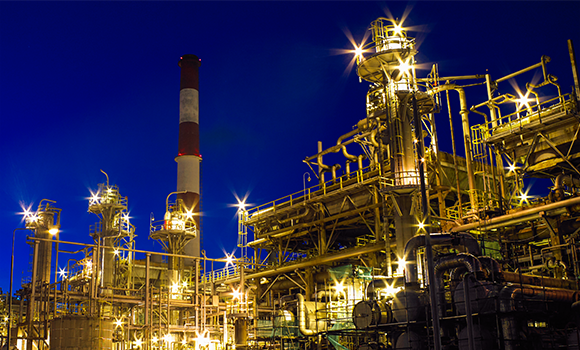
The BTX Facility produces aromatic petro-chemistry products such as Benzene, Toluene, and Xylene by adding Naphtha.
The company sets a basis for business diversification in the petro-chemistry area of S-O
BTX Plant Table
| Product |
Facility capacity |
Date of
commercial
operation |
| Benzene |
150,000 ton/year |
1991.04 |
| Toluene |
350,000 ton/year |
| Xylene |
450,000 ton/year |
Xylene Center
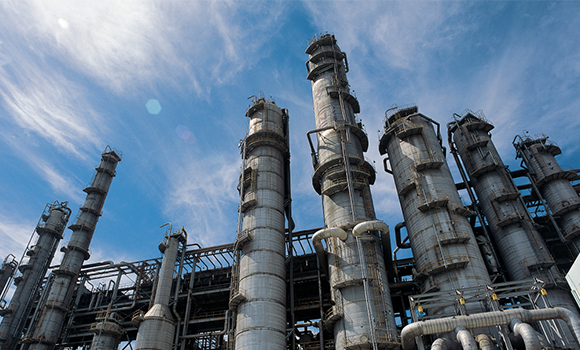
The Xylene Center produces Para-Xylene, which is a base material of compound fiber, by adding C9+ as material and BTX product including Xylene and Toluene.
The raw materials from the existing BTX factory are applied stably for advantage in economic feasibility such as a reduction in production cost.
Xylene Center Table
| Product |
Facility capacity |
Date of
commercial
operation |
| Para-Xylene |
800,000 ton/year |
1997.12 |
| Benzene |
150,000 ton/year |
RFCC
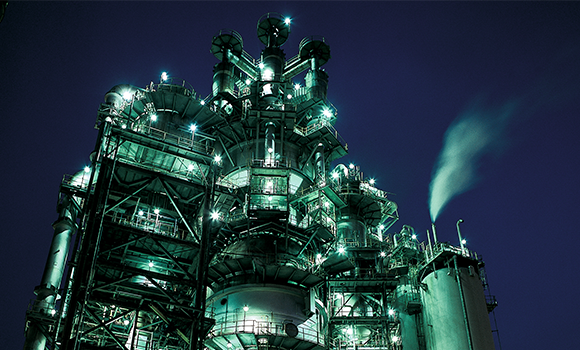
RFCC is a petrochemical facility that produces propylene, a feedstock for poly propylene production, by using bunker-C oil as a raw material.
RFCC Table
| Product |
Facility capacity |
Date of
commercial
operation |
| Propylene |
200,000 ton/year |
1997.04 |
No.2 Aromatic Complex
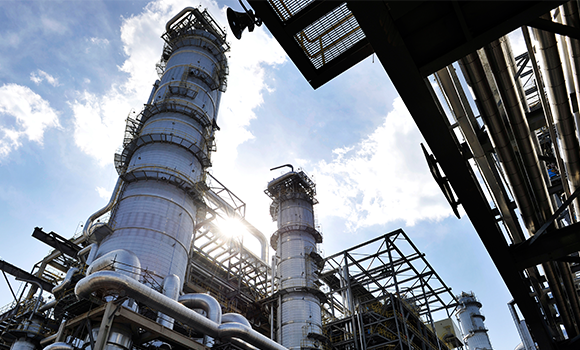
The Second Aromatic Complex is composed of an aromatizing facility producing BTX, which is a base material of petro-chemical products, by reforming Naphtha produced from crude oil refining process along with the 2nd Xylene Center that produces Para-Xylene, which is a base material of compound fiber.
No.2 Aromatic Complex
| Product |
Facility capacity |
Date of
commercial
operation |
| Para-Xylene |
1,050,000 ton/year |
2011.04 |
| Benzene |
300,000 ton/year |
RUC/ODC Complex
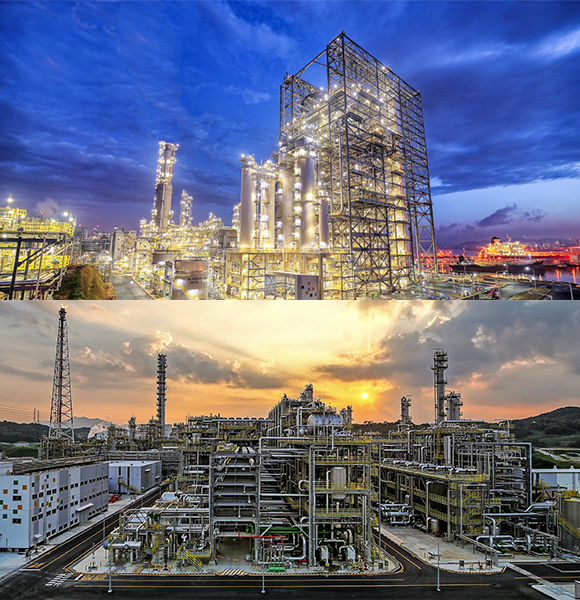
RUC/ODC Complex produces ethylene, propylene, by using bunker-C oil as a raw material and using these olefins, produce polypropylene, propylene oxide which are widely used in industrial products like home appliance, construction, car, etc.
RUC/ODC Complex : Product, Facility capacity, Date of commercial operation Table.
| Product |
Facility capacity |
Date of commercial operation |
| Ethylene |
187,000 ton/year |
2018.11 |
| Propylene |
710,000 ton/year |
| Propylene Oxide |
300,000 ton/year |
| Polypropylene |
405,000 ton/year |
| MTBE |
370,000 ton/year |
| Benzene |
72,000 ton/year |